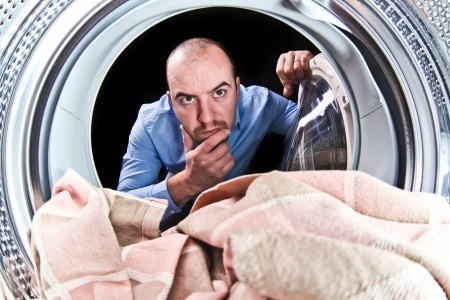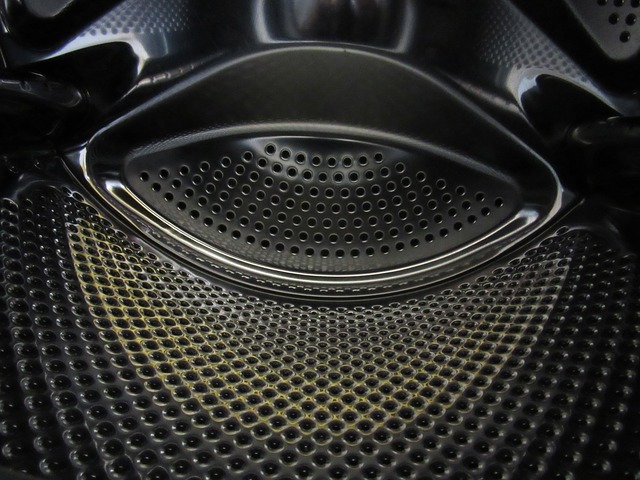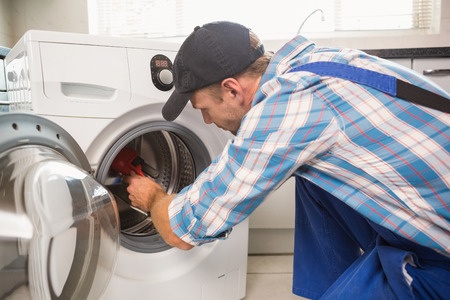Have you been in a situation where your washing machine or any home appliance stops working when you are expecting guests or when you have a party in your house. Having a broken appliance, especially when you have guests, can spell disaster in most homes. One of the problems you are likely to face with your washer is if the wash tub won’t spin. When you face this problem, it is best to get help from a washer repair person. Ideally, washer repair and washer service must be done by a professional. This is because the machine may contain certain complicated parts that are best handled by a washer technician. When you contact a washing machine service technician, the washer repairman will try to understand your problem and offer the best solution. For any washing machine repair help, you should use the services of a professional that is close to your place. If you are wondering, “How do I get details of a washer repair in my area?” All you have to do is type “Washing machine repairman near me” in any search engine, followed by your area code. This will give you the details of all companies that offer washer repair near me.

If you want to avoid investing in professional washer service repair, you could attempt home repairs of your washer. To do this, you must be able to identify the problem with your residential appliance.
Here are the details of some areas that could prevent the washer from spinning:
Drive Motor Coupling

This part of your top loading washing machine transfers power from the washer motor to its transmission. It is usually made using plastic and it consists of two drive forks that have a rubber coupling between them. The coupling reduces the friction between the forks and prevents them from breaking. The first plastic drive fork is attached to the shaft of the drive motor and the second fork is attached to the transmission shaft. When the shaft rotates, it can wear out the coupling and the forks which can prevent the motor coupling from engaging the drive motor and transmission. When the coupling is worn out, the water will fill and drain from the machine but the wash tub will not spin. To check the condition of the coupling, remove the machine cabinet. Make sure you disconnect the power supply to the machine before attempting repairs.
Interlock
The door lock of your washer is called the interlock. This safety feature prevents the machine from operating when the door of your top or front loading washer is not closed properly. The interlock has two parts; one is fixed on the machine body and other on the door. The part that is attached to the machine body contains a switch. This switch indicates to the control board that the door is closed and it allows the spin cycle to operate. When there is a problem with the interlock, it may not lock the machine door properly or it may prevent the switch from operating. This will prevent the wash tub from spinning.
In some washer models, the machine will display a code when there is a problem with the interlock. If your washer displays this code, just change the interlock and your machine will start functioning normally. Before replacing the interlock, disconnect the power supply to the machine.
Wax Motor
The motor is used to engage the interlock assembly. When the wash cycle starts, electric current is supplied to the motor. This pushes a pin that locks the door. When the motor malfunctions, the door will not close properly, this in turn will prevent the tub from spinning. Visual inspection may not be sufficient to determine the condition of the wax motor. You will need a multi-meter to check its continuity. The motor must have a resistance of 1600 to 1800. If the motor shows open circuit, it means it is defective.
Lid Switch
This switch will prevent the motor circuit from working when the lid of your washer is open. When there is a problem with the switch, the machine may not spin. The top of you washer houses the switch and it includes a pin that will activate the switch when the lid is closed. Before you check the condition of the switch and the parts connected to it, you must make sure the switch is activated when you close the lid. If the switch is activated but there is no power supply to the motor, then switch is defective and it must be replaced. To do this, disconnect the power supply to the appliance and remove all the wires that are connected to the switch. Remove the switch and check its continuity using a multi-meter.
Clutch Assembly

The assembly is used with the transmission shaft to the wash tub during the spin cycle. Regular use of the washer can wear out the clutch and create strange noises. Also, a worn out clutch can prevent the washer from spinning or reduce the spin speed. When the speed of the tub is reduced, it will leave your clothes wet even after the drying cycle is complete. A few other symptoms of worn out clutch assembly include brake dust below the washer, loud noise or burning smell during the wash cycle. If you notice any of these symptoms during the spin cycle, it means that the clutch is worn out and it must be replaced. The clutch is located under the outer tub. To check the condition of the assembly or to replace it, you must remove the machine cabinet.
Drive Belt
If you use a top load washer, the belt connects the transmission to the drive motor. On the other hand, if you have a front load washer the belt connects the wash basket to the drive motor. If the belt is damaged due to excessive wear or because of overheating, the machine will not spin. Before you replace the belt, check the condition of idler pulley and motor glide. If you are using a top load washer, you should check the movement of the transmission pulley and wash basket. You should also check for signs of water or oil leakage near the pulley area. If you use a front load washer, you should ensure that the wash tub moves freely. When replacing the belt, make sure you get the same make and size. This is necessary for proper performance of the machine. When replacing the belt, disconnect the power supply to the machine.
Popular cities we service:
Houston, Reno City, Omaha, Albuquerque, Fort Worth, Cleveland, Virginia Beach, Detroit, San Jose, Louisville, Aurora, Charlotte, Atlanta, San Francisco, Middletown, Boston, Seattle, Pittsburgh, San Diego, Austin, Tampa, Dallas, Columbus,Birmingham, Portland, Sacramento, Kansas City, Indianapolis, Denver, Nashville, Orlando, Miami, Newark, Little Rock, Tacoma, New York City, Tallahassee, Baltimore, Baton Rouge, Minneapolis, Allentown, Billings, Oklahoma City, Olympia, St. Louis, Colorado Springs,Jackson, Phoenix, Salt Lake City, Richmond, Silver Spring, San Antonio, Everett, Tucson, Milwaukee, Philadelphia, Raleigh, Columbia, Las Vegas, Manchester, New Haven, Chicago, Providence, Jacksonville FL, Provo, Henderson, Lakewood, Bowie, Eugene, Los Angeles, Charleston SC, Appliance Repair Fort Lauderdale, Refrigerator Repair Washington DC, Washing Machine Repair Biddeford, Dryer Repair Hackensack, Appliance Service Ramapo, Oven Repair Alexandria, Stove Repair Vernon Township, Range Repair Paterson, Freezer Repair Parsippany-Troy Hills, Dishwasher Repair Elizabeth, Washer Repair Jersey City, Fridge Repair Edison, Dishwashing Machine Repair Franklin Township, Appliance Repair Technician Lexington
